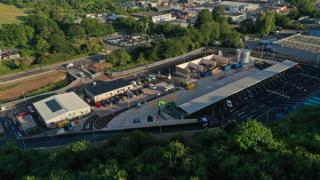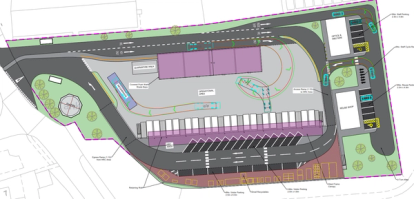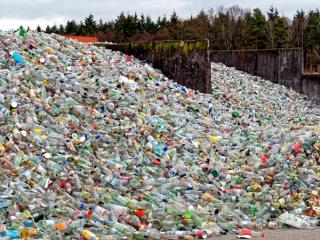
Household waste recycling centre (HWRC) guidance review and update for WRAP
- Client Name
- Waste & Resources Action Programme (WRAP)
- Location
- UK

Challenge
Household waste recycling centres (HWRCs) face a range of challenges that necessitated a comprehensive update to the existing Waste & Resources Action Programme (WRAP) guidance. Many HWRCs operate with ageing infrastructure and outdated service models that no longer align with modern waste management priorities. Local authorities are under increasing pressure to deliver cost-effective services while meeting ambitious environmental targets, including net zero commitments, and circular economy objectives. Legislative changes and emerging policy frameworks introduced new compliance requirements, such as fire prevention, odour management, and biodiversity net gain, which existing facilities are often ill-equipped to address.
Additionally, the sector has experienced a shift in service delivery models, with more councils opting to insource operations, requiring tailored guidance on contract mobilisation and asset management. The COVID-19 pandemic further highlighted operational vulnerabilities, such as the need for booking systems and cross-border service restrictions. HWRCs have been expected to expand their functionality, incorporating reuse and repair services, which has demanded new infrastructure and stakeholder collaboration. Financial constraints limit the ability of councils to invest in upgrades, making it essential for the guidance to include practical advice on delivering services and adapting to change.
SLR recognised these challenges and proposed a structured approach to address them through the guide update. By capturing sector-wide changes from 2018 to 2024 and integrating best practices, the updated guide aimed to support local authorities in navigating these complexities to help and support the transformation of HWRCs into resilient, future-ready facilities.
Solution
To deliver the HWRC Guide update, SLR undertook a comprehensive and structured approach. SLR conducted a full review of the 2018 HWRC Guide, identifying outdated content, gaps, and opportunities for improvement. This included a gap analysis of legislative changes, operational practices, and sector innovations since the last update.
The team engaged with stakeholders through surveys (e.g., LARAC/NAWDO), interviews, and industry consultations to gather insights on service delivery models, reuse and repair integration, and infrastructure challenges. SLR also reviewed WRAP’s preliminary feedback and incorporated findings from recent WRAP-commissioned HWRC reviews. A stage-gated drafting process was implemented, with chapters assigned to subject matter experts and reviewed through internal QA and WRAP feedback.
SLR’s multidisciplinary team brought together expertise in operations, design, compliance, and strategic planning. They updated data, benchmarked performance metrics, and proposed new content areas such as carbon accounting, social value delivery, and climate adaptation. The team also sourced new case studies and images, ensuring the guide was practical and user-friendly. Throughout the project, SLR maintained a live project monitoring log and held regular check-ins with WRAP to ensure progress and alignment.
Impact
The updated HWRC Guide, delivered by SLR in collaboration with WRAP, has significantly enhanced the resources available to local authorities and stakeholders involved in HWRC delivery. By incorporating sector-wide changes, emerging legislation, and best practices, the guide continues to serve as a comprehensive and practical tool for improving HWRC services. The inclusion of new chapters and thematic areas such as carbon accounting, social value delivery, and climate change adaptation ensures that the guide aligns with current policy priorities and operational realities.
Local authorities can now access actionable insights on service delivery models, infrastructure design, and stakeholder engagement, enabling them to make informed decisions and implement effective changes. The guide’s refreshed structure and improved readability make it accessible to a broad audience, including senior officers, waste contractors, and third-sector partners. Case studies drawn from recent projects provide real-world examples of successful HWRC transformations, offering inspiration and guidance for replication.
The integration of business case development tools supports councils in securing funding for new initiatives, while updated data and benchmarking metrics facilitate performance evaluation and strategic planning.
Please find the full guide here.


